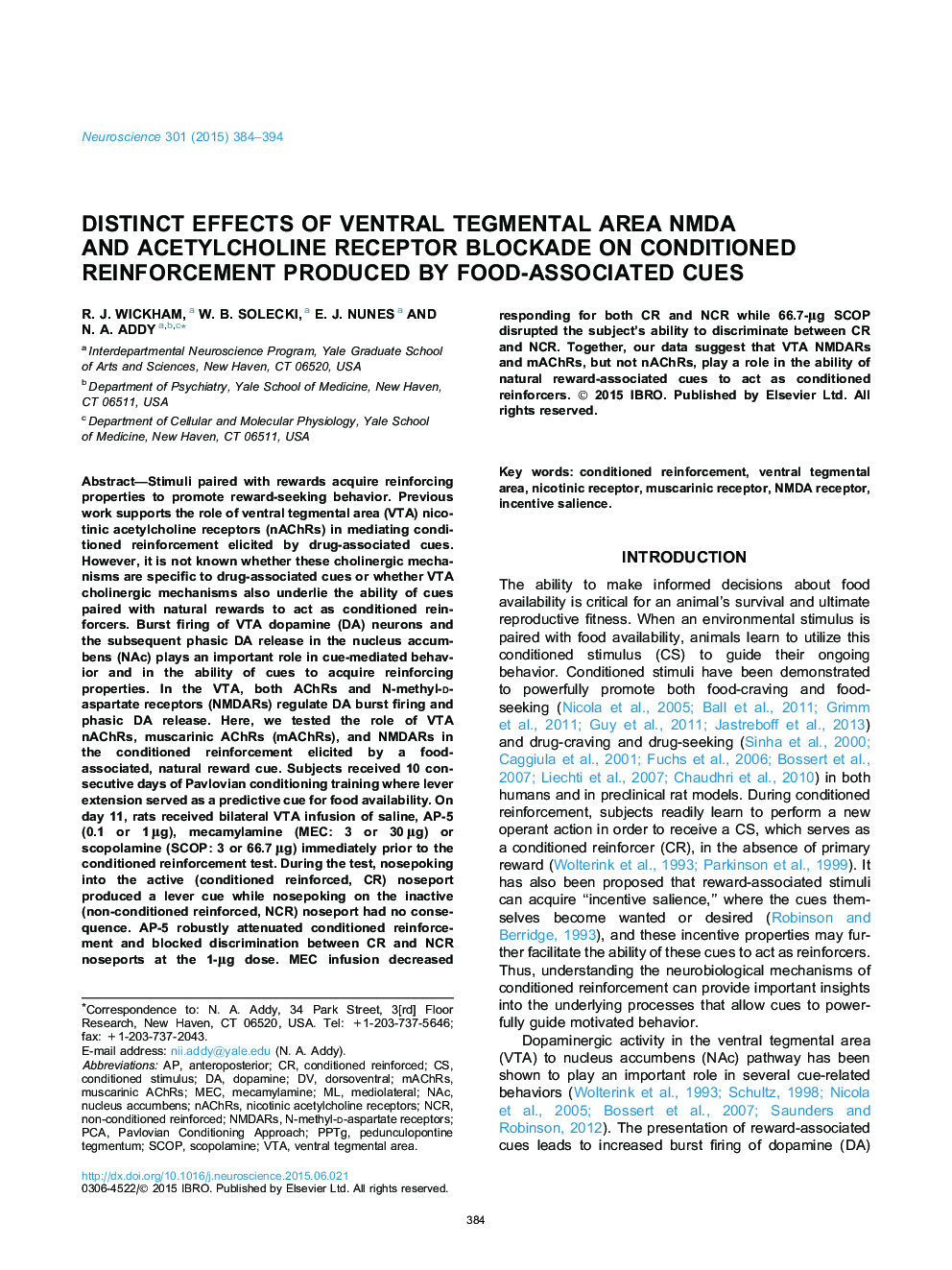| کد مقاله | کد نشریه | سال انتشار | مقاله انگلیسی | نسخه تمام متن |
|---|---|---|---|---|
| 6272117 | 1614775 | 2015 | 11 صفحه PDF | دانلود رایگان |

- We examined conditioned reinforcement during VTA receptor manipulation on test day.
- VTA NMDA receptor blockade attenuated conditioned reinforcement.
- VTA nicotinic receptor blockade non-specifically decreased responding.
- VTA muscarinic receptor blockade disrupted conditioned reinforcement.
Stimuli paired with rewards acquire reinforcing properties to promote reward-seeking behavior. Previous work supports the role of ventral tegmental area (VTA) nicotinic acetylcholine receptors (nAChRs) in mediating conditioned reinforcement elicited by drug-associated cues. However, it is not known whether these cholinergic mechanisms are specific to drug-associated cues or whether VTA cholinergic mechanisms also underlie the ability of cues paired with natural rewards to act as conditioned reinforcers. Burst firing of VTA dopamine (DA) neurons and the subsequent phasic DA release in the nucleus accumbens (NAc) plays an important role in cue-mediated behavior and in the ability of cues to acquire reinforcing properties. In the VTA, both AChRs and N-methyl-d-aspartate receptors (NMDARs) regulate DA burst firing and phasic DA release. Here, we tested the role of VTA nAChRs, muscarinic AChRs (mAChRs), and NMDARs in the conditioned reinforcement elicited by a food-associated, natural reward cue. Subjects received 10 consecutive days of Pavlovian conditioning training where lever extension served as a predictive cue for food availability. On day 11, rats received bilateral VTA infusion of saline, AP-5 (0.1 or 1 μg), mecamylamine (MEC: 3 or 30 μg) or scopolamine (SCOP: 3 or 66.7 μg) immediately prior to the conditioned reinforcement test. During the test, nosepoking into the active (conditioned reinforced, CR) noseport produced a lever cue while nosepoking on the inactive (non-conditioned reinforced, NCR) noseport had no consequence. AP-5 robustly attenuated conditioned reinforcement and blocked discrimination between CR and NCR noseports at the 1-μg dose. MEC infusion decreased responding for both CR and NCR while 66.7-μg SCOP disrupted the subject's ability to discriminate between CR and NCR. Together, our data suggest that VTA NMDARs and mAChRs, but not nAChRs, play a role in the ability of natural reward-associated cues to act as conditioned reinforcers.
Journal: Neuroscience - Volume 301, 20 August 2015, Pages 384-394